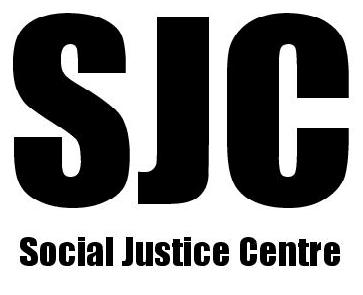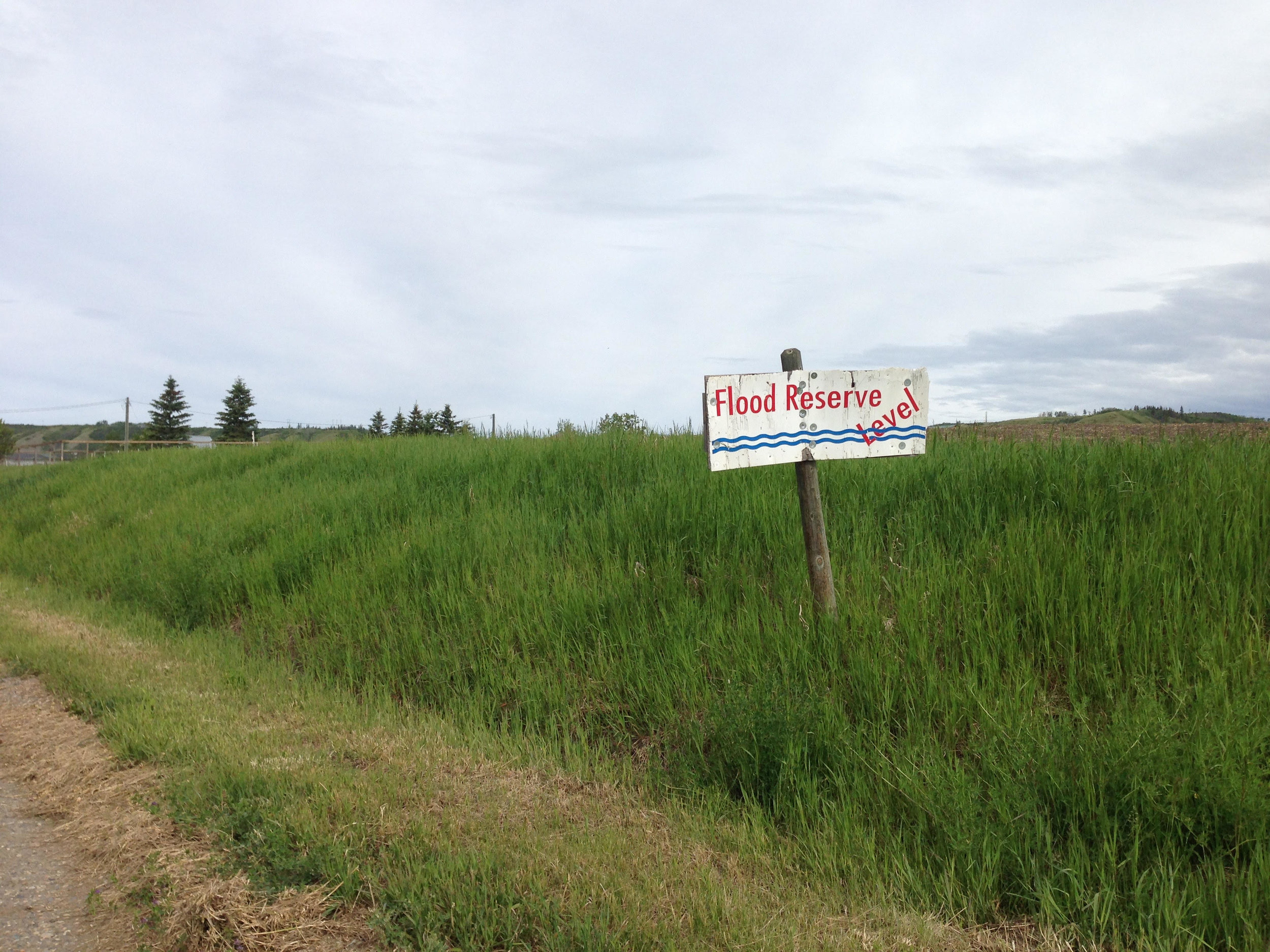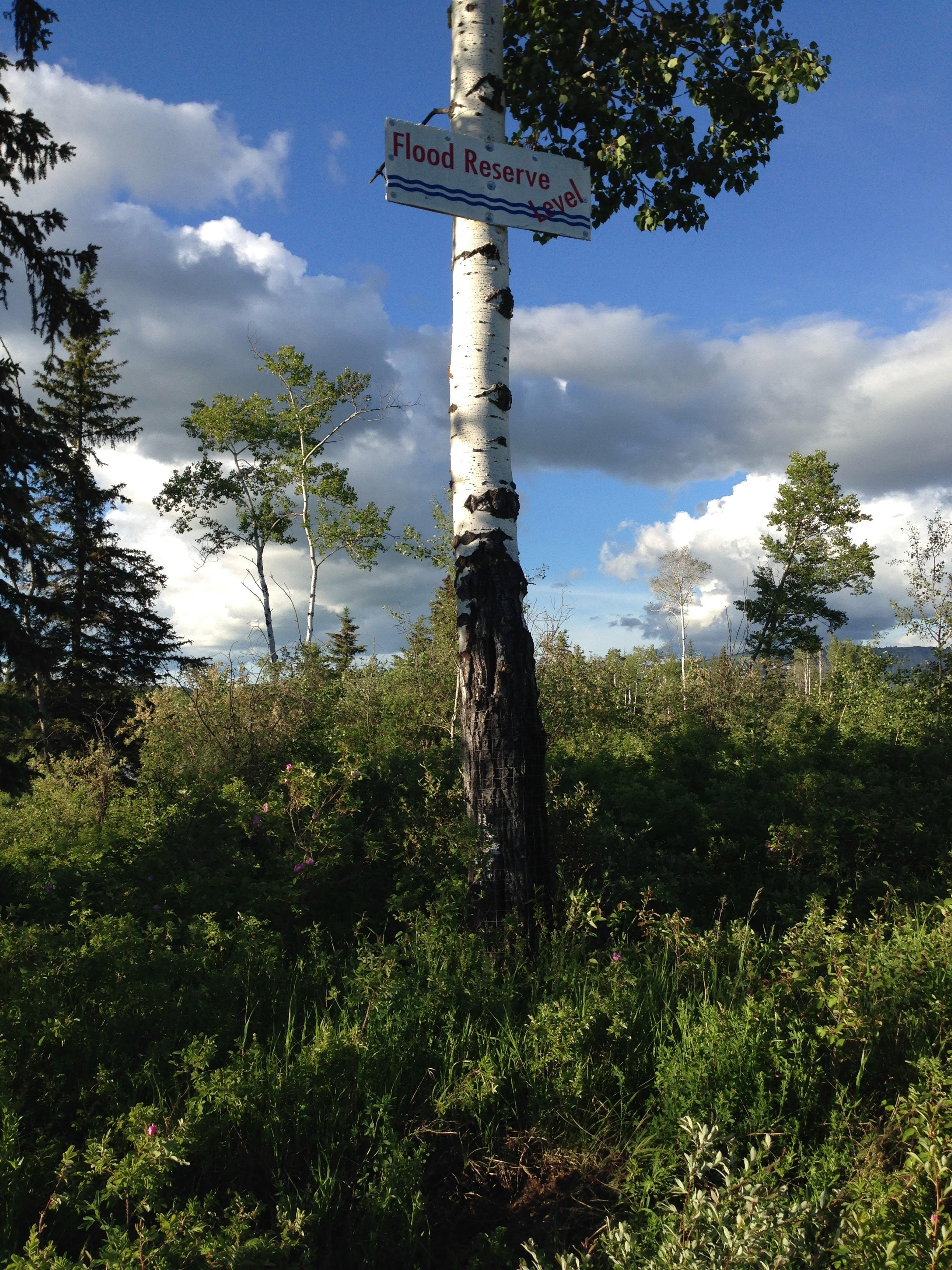By Rita Wong
From a vantage point above the attempted destruction of the Peace River Valley for the Site C Dam, the trucks that move tons of dirt from one part of the river bank to another look like a huge waste of 12 billion dollars and counting. What a massive methane and mercury releasing disaster looks like in its early stages:
Though the scale of destruction is distressing and incredibly wasteful of the rich alluvial soil that is BC’s best chance for northern food security, the land has other messages for us as well, if we listen carefully and learn. If this dirt is left alone and treated with respect, the land will take it back, and heal it for free.
Ken and Arlene Boon are farmers who steadfastly do their best to protect the Peace River Valley. Though their farm has been expropriated by BC Hydro, they remain on the land that Arlene’s family has farmed for generations. They are deeply grounded in the land’s resilience as well as witnesses to the horror of what happens when people do not fulfill their responsibilities to care for the land. Their farm sits near Cache Creek, which flows into the Peace River. Cache Creek’s fertile banks and watershed were clearcut and wastefully mulched by BC Hydro last year. However, the land is already healing itself, as we noticed horsetail and mushrooms reclaiming what had once been incredibly rich forest before Hydro wrecked it:
Not everyone looks down and notices the humble life reasserting itself. For those who are less observant, though, even they cannot miss how the “dead” tree stumps left by Hydro are already growing back three feet of leafy exuberance. Here is Arlene standing by the vivid regrowth near Cache Creek in the Peace River Valley:
The new growth is even higher in some places, as Arlene and Shilo demonstrate here:
I found it heart-wrenching visiting the Peace Valley and seeing the signs marking how high the water would rise if the dam is allowed to break Treaty 8 and flood this sacred valley:
It’s distressing that BC is throwing away its best chance for food security by prioritizing a corrupt mega project that we don’t need over a sustainable economy based in food and respect for the land. Perfectly good farmland is being left to erode instead of being seeded because Hydro discourages farming – here is Arlene standing in a huge erosion ditch on expropriated farmland that BC Hydro is not looking after despite repeated complaints by its former owners:
The Boons are the kind of people you want around in case of emergency – calm under pressure, smart, quick, and very capable. They told me the story of people rallying to help in a fire that had happened at their farm – neighbours and family members put their differences and arguments aside to come together to help. This, in a small scale, is what we need to happen on a large scale, with the emergency that global warming presents us. We need to learn to live in balance with the land, not destroy its resilience by removing the biodiversity and complex systems that already exist, that have evolved over millennia with a wisdom we urgently need to learn from. We need to honour and respect Indigenous people’s knowledges and histories with the land, not arrogantly displace them and erase that knowledge by imposing a bankrupt narrative of 20th century progress that has led us to the climate destabilization we now face as a species. Instead, Hydro is sending archeological excavators to dig up the Boons’ farm and “preserve” bits of history that they would make meaningless through removal from the land that gives them context.
The Boons are future thinking; they have solar panels on their farm, for instance:
When monstrous monocultural industrialization falls apart because it is a brittle, unsustainable system, it is the self-sufficiency and on-the-ground knowledges of people like the Boons that will be our life support system. Thankfully, their practical and necessary approaches to respecting and working with the earth can be found quietly throughout the Peace Valley region. Although the loud noise and scale of oil, fracking and big extractive industries gets all the money and temporary attention, the future we need is also in the process of quietly building itself.
Hudson’s Hope, for instance, is the municipality with the highest amount of solar energy per capita in BC (https://www.energeticcity.ca/2018/05/hudsons-hope-hosting-ribbon-cutting-ceremony-for-municipal-solar-project-this-weekend/). The newly installed solar wave outside their swimming pool is a beautiful testament to the power of the people:
And Hip Peace Produce continues to farm this year, growing the four sisters – corn, squash, beans, sunflowers – and providing delicious local produce to people up north, though its future remains endangered by the dam:
The land speaks. The question is whether people have the capacity to listen and learn.
As the West Moberly and Prophet River First Nations go to court on July 23 to seek an injunction on the Site C dam so that their case on treaty rights can be properly heard, it is more urgent than ever that everyone in BC listens to the land, the river, and the future they make possible. It is our responsibility to steward this future and not permit it to be foreclosed by the greed and corporate short-sightedness that is currently driving both Hydro and the provincial government that is running on business-as-usual assumptions instead of carefully assessing what we need to build the communities of the future on the ground.
To get updates about the First Nations efforts to seek an injunction to protect the sacred Peace River Valley from the Site C dam, please sign up at https://witnessforthepeace.ca/speak-out/












